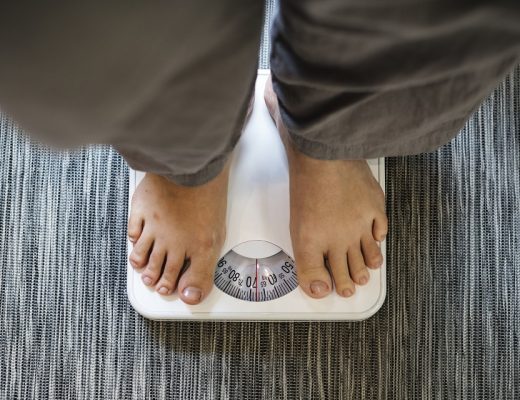With displays taking over our lives, we must address eye fatigue. These days, displays are everywhere, from PCs to smartphones and tablets. The problem is so widespread that it’s almost impossible not to notice them. Take regular breaks and try to minimize the amount of time you spend doing one task. You might want to invest in a document holder if you’re working for a long time. Now let’s have some more ways to prevent eye fatigue.
Practicing The “20-20-20 Rule”
The 20-20-20 Rule is a proven technique to reduce eye fatigue. By closing your eyes for 20 seconds every 20 minutes and drinking water, you will give your eyes a rest from the demands of daily activities. Research has also proven that frequent breaks give the eyes the time they need to rest and regenerate. Multitasking? The 20-20-20 Rule can be implemented in any work environment, even in the most technologically advanced workplaces.
The 20-20-20 rule is an excellent way to reduce eye fatigue, primarily if you work on a computer. It recommends taking 20-second breaks every 20 minutes from a digital screen to freshen up your eyes. It can help prevent eye fatigue caused by digital devices and eye muscle imbalance. For more information, contact an eye care professional. A doctor can also help you correct eye problems like eye muscle imbalance and uncorrected vision.
The 20/20/20 rule encourages people to take breaks from digital devices every 20 minutes and look away for at least 20 seconds. This method is beneficial if you are constantly working on a computer, tablet, or smartphone. A 20-second break will prevent eye fatigue and keep your eyes fresh. It would help if you also remembered to blink more often to keep your eyes moist. The following guidelines are suggested by Dr. Jeff Anshell, a specialist in “vision ergonomics”.
Using Blue Light Glasses
You need to look for the best blue-light blocking glasses to prevent eye fatigue. Using blue light glasses to prevent eye fatigue may help. Studies have shown that blue light can penetrate the retina, increasing the risk of cataracts and macular degeneration. But, blue light glasses are not a cure-all. There is a better way to protect your eyes from this light – limit your time in front of digital screens. However, if you must spend time in front of your screen, wearing blue light glasses may help.
Most of us spend hours in front of a computer, tablet, smartphone, or another screen. And we feel obligated to check multiple devices at once. This increased screen time contributes to digital eye fatigue, which causes dry, itchy eyes, severe headaches, and even macular degeneration. Fortunately, using blue light glasses can help reduce digital eye fatigue and restore your sight. Unfortunately, the effects of blue light are hard to ignore.
Limiting Time Spent On A Single Activity
The easiest way to prevent eye fatigue is to limit the time you spend doing an intense activity. For example, try looking away from your screen every 20 minutes. If this is not possible, turn away for several hours. Balance your workouts by taking short breaks or walking outdoors in natural light during your lunch break. If you have trouble reducing eye fatigue, you may need corrective lenses or surgery. You should also limit your time spent on a single activity.
Limiting screen time is essential for children and adults alike. Many parents are limiting screen time to prevent screen sickness and virus transmission. However, excessive screen time is a severe health risk and may result in eye fatigue and headaches around the temple. Limiting screen time is essential to prevent eye fatigue, so limit your child’s time before the computer or smartphone. Taking breaks during prolonged activity is also important for the health of your eyes.
Taking Frequent Breaks
Taking frequent breaks can help to reduce eye fatigue and reduce the risk of digital vision syndrome. Unfortunately, the increase in the use of computers and other digital devices has resulted in an increased incidence of digital eye strain. Fortunately, it is not difficult to protect your eyes. Taking frequent breaks can reduce digital eye strain and headaches caused by the long hours spent using digital devices. Read on for more tips. And don’t forget to practice good posture while using digital devices.
Taking frequent breaks is essential to reducing eye fatigue. Use the 20-20-20 rule to keep your eyes refreshed and relaxed. This simple rule helps you relax your eye muscles by focusing on an object 20 feet away for 20 seconds. You can also go outside or drink some water. Taking frequent breaks will also help prevent dry eyes and headaches. And remember to use an ergonomic workspace for your computer. You can download apps for free on your computer to help you prevent eye strain.
Using A Document Holder
Using a document holder will help you reduce neck flexion while reading and writing documents. In addition, it will position the document ergonomically so you won’t have to refocus your eyes constantly. This is particularly important for people who spend long hours reading. It can also help you avoid headaches and eye fatigue. However, this is not a cure-all. To reduce eye fatigue, use document holders and an ergonomic keyboard and chair.
When using a document holder, position the holder as close to your monitor. If the document holder does not adjust in height, you can place a book or magazine on it to elevate it to eye level. Modern document holders are in-line, allowing the document to sit between the monitor and keyboard, preventing neck twists. In addition, the in-line design allows your body to remain in an ergonomic position, preventing neck and eye strain.







No Comments